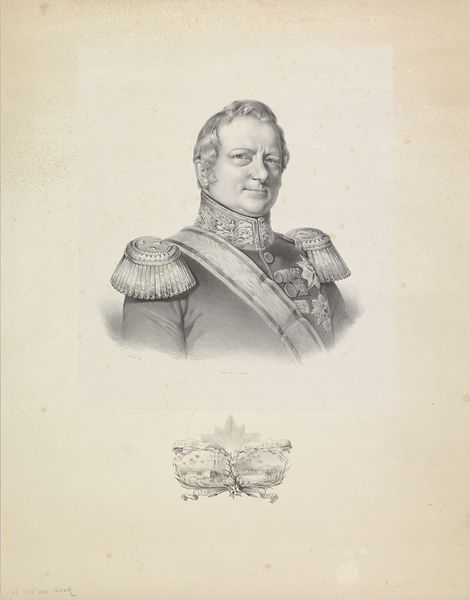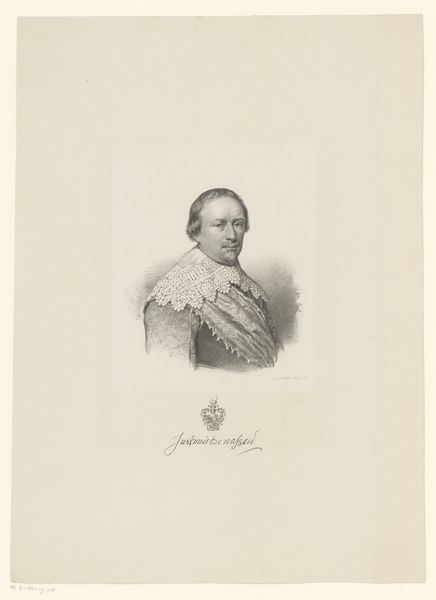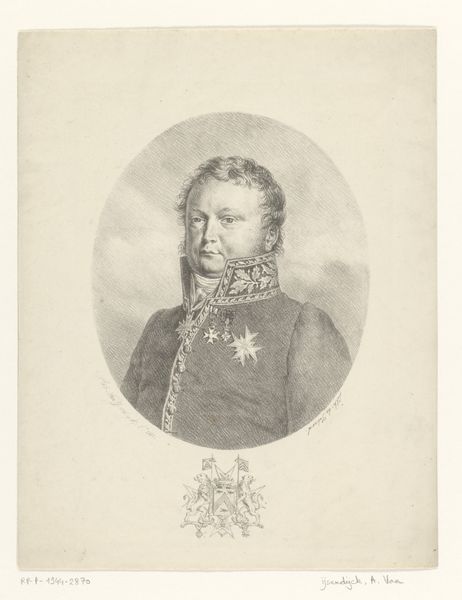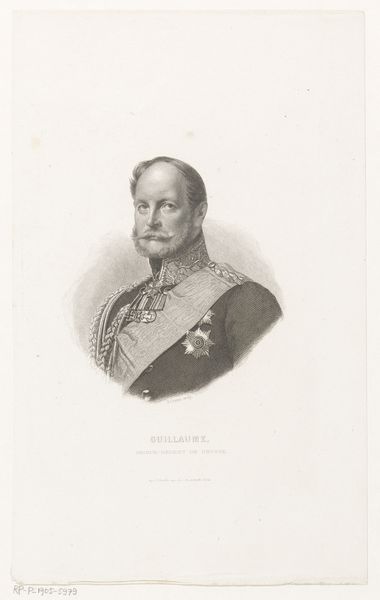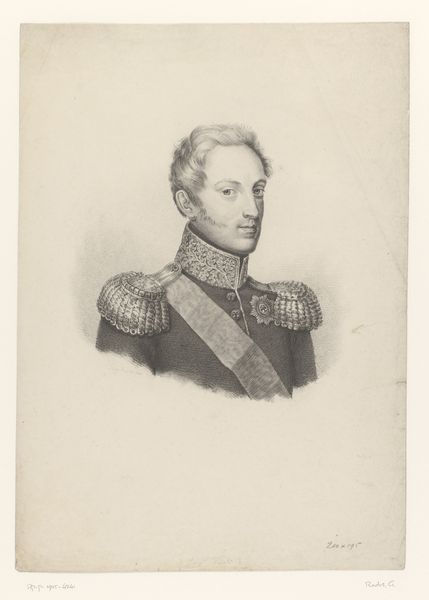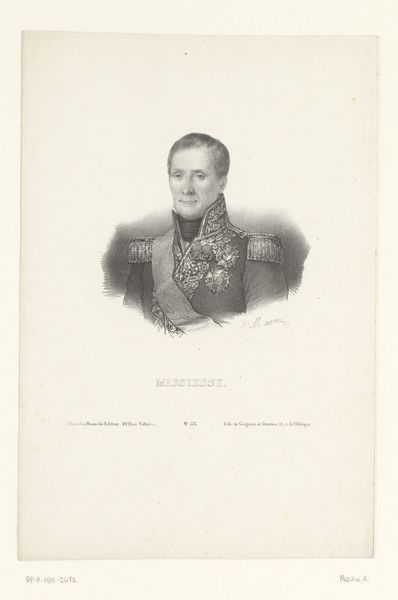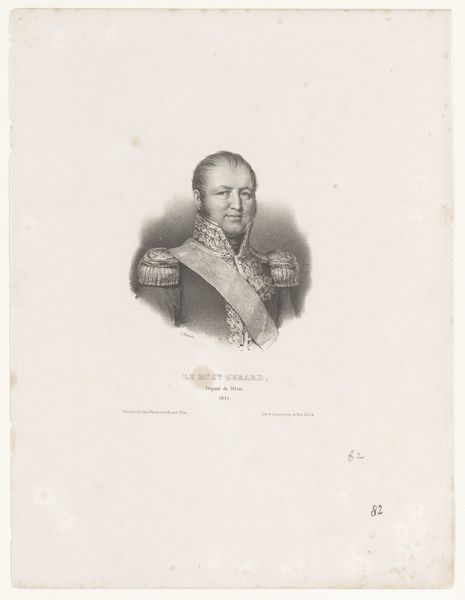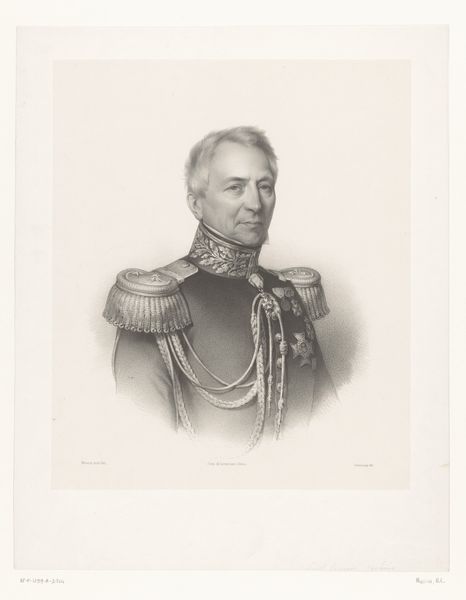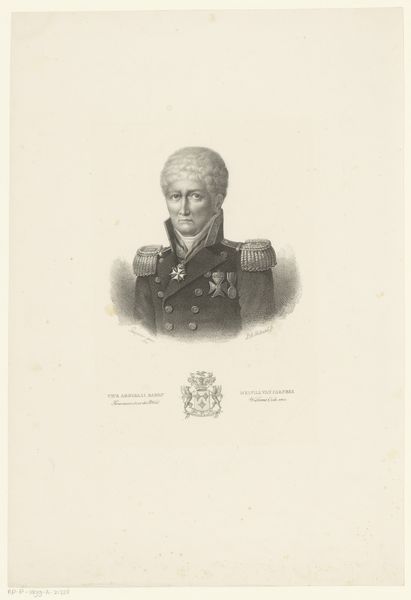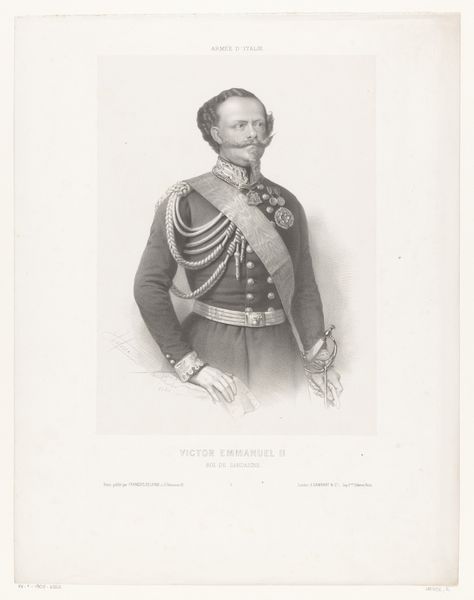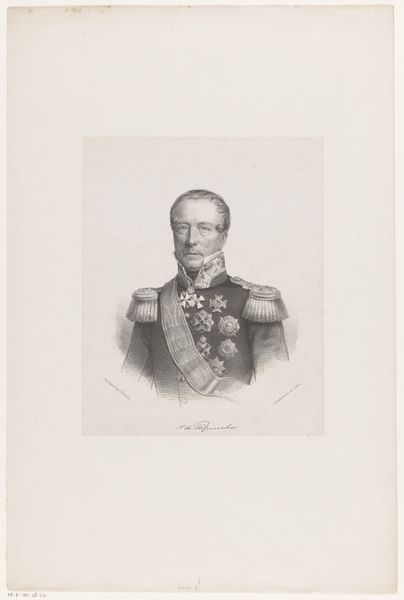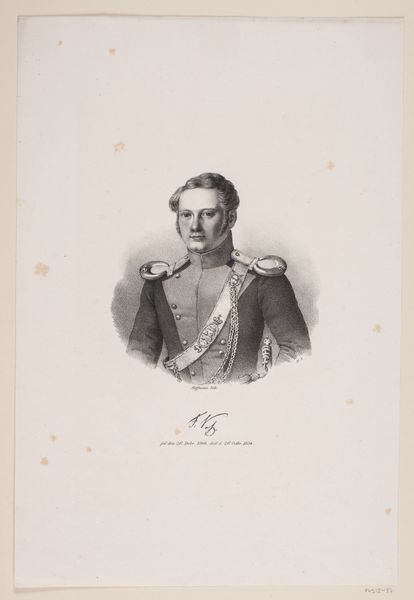
drawing, print, pencil, engraving
#
portrait
#
pencil drawn
#
drawing
#
neoclacissism
# print
#
pencil sketch
#
pencil drawing
#
pencil
#
engraving
Dimensions: height 239 mm, width 161 mm
Copyright: Rijks Museum: Open Domain
Curator: Before us hangs an engraving dating from somewhere between 1822 and 1863. It's a portrait of Hendrik Merkus de Kock, currently held here at the Rijksmuseum. Editor: There's an undeniable precision to the linework; each contour meticulously etched, constructing this individual’s likeness. I’m immediately drawn to the stark contrast and the formal composition. Curator: Indeed. As a portrait, it’s quite conventional in its rendering, very much a product of the Neoclassical ideals still lingering at that time. Though an engraving, it mimics the tonal gradations one might expect from a pencil drawing. Editor: Consider the composition. The subject’s gaze directs ours; the high collar frames the face and brings immediate attention to it. Note how the strategic shading sculpts and models the forms—there’s a pronounced concern for shape. The decorations, epaulettes, the sash across his chest—these draw our eyes in different directions before landing once again on his gaze. Curator: Those decorations signify his status, naturally. Hendrik Merkus de Kock held several high-ranking positions, notably as governor-general of the Dutch East Indies. The portrait subtly underscores the sitter’s position within colonial power structures. The very act of commissioning such a piece underscores a wish to document, commemorate, and reinforce that position. Editor: You can really trace that political undercurrent even in the engraving technique itself, which is traditionally very exacting and replicable, well suited for disseminating images of power widely. Consider how that affects our modern-day encounter with the artwork itself. Is our viewing shaped by the political framework that facilitated it? Curator: Undoubtedly. The intersection of aesthetic execution and political message—how both converge and influence our reading of it is key. Thank you, those nuances provide some new insights for me to think about. Editor: Always. For me, it reiterates the importance of form not as an isolated entity but as a carrier of cultural narratives, that help define the subject that it renders and more broadly the context out of which it was crafted.
Comments
No comments
Be the first to comment and join the conversation on the ultimate creative platform.
